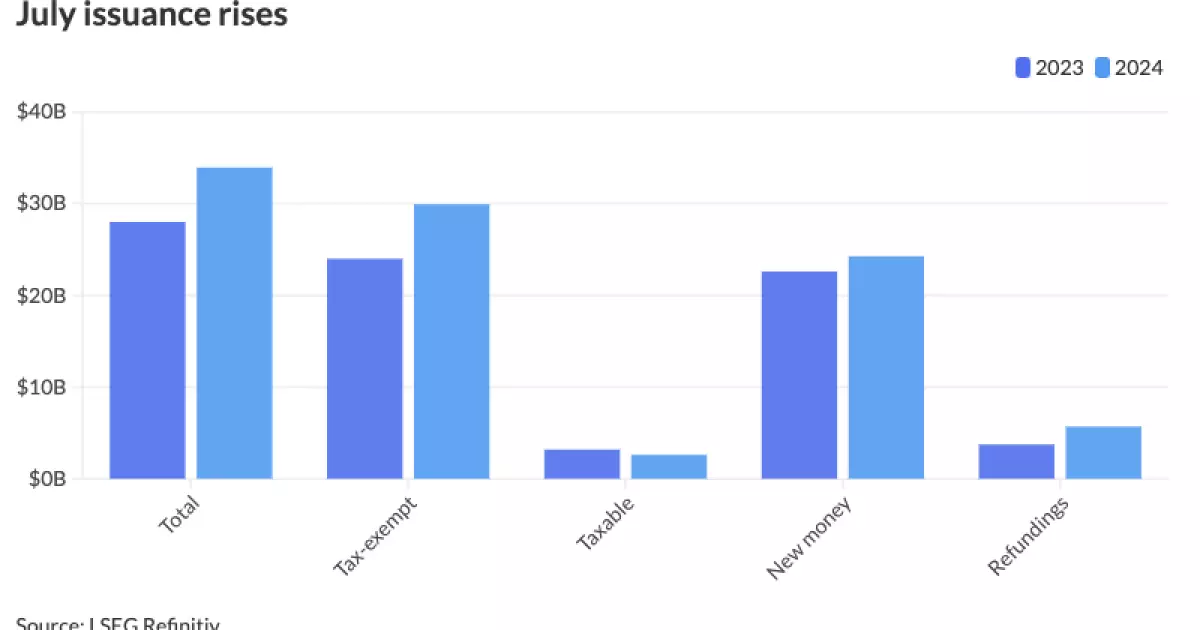The increase in municipal bond issuance during July has been attributed to several factors such as front-loaded issuance ahead of the election, a lower rate environment, and a breakneck pace of supply. These trends have continued for the seventh consecutive month, with volume rising to $33.935 billion in 576 issues, representing a 21.2% increase from the previous year. This article critically analyzes the factors contributing to the surge in municipal bond issuance and their implications for the market.
The surge in issuance can be linked to the decline in rates, which has made it more attractive for issuers to bring deals to market. There is also a sense of urgency among issuers to get ahead of potential rate volatility associated with the upcoming election. Pandemic-related uncertainties have faded, and the economy has remained stable, prompting issuers to pull forward supply. However, there is also a cautious approach among some issuers who might delay issuance in anticipation of expected Federal Reserve rate cuts. The market has already priced in a Fed rate cut in September, adding to the complexity of decision-making for issuers.
The summer months usually witness a drop in issuance, but this year has been an exception with strong and steady issuance throughout June and July. This deviation from the norm has raised questions about the potential impact on supply in the coming months. While the pace of issuance is expected to moderate, it is likely to remain high compared to the previous year. This trend reflects the balancing act that issuers have to navigate between taking advantage of favorable market conditions and mitigating risks associated with changing economic scenarios.
Tax-exempt issuance dominated the market in July, with a significant increase from the previous year. New-money and refunding volumes saw a rise, pointing towards the willingness of issuers to tap into the market for both short-term and long-term funding needs. Revenue bond issuance witnessed a substantial increase, while general obligation bond sales experienced a slight decline. Negotiated deal volume outpaced competitive sales, indicating a preference for structured deals in the current market environment.
California emerged as the top state in terms of municipal bond issuance year-to-date, with a notable increase from the previous year. Other states such as Texas, New York, Florida, and Massachusetts also experienced significant growth in issuance volumes. This regional distribution highlights the diverse nature of the municipal bond market and the varying trends across different states. It also underscores the importance of state-specific factors in shaping issuance patterns.
The surge in municipal bond issuance in July reflects a combination of market dynamics and issuer behavior. While the current trend is influenced by factors such as rate environment, election uncertainty, and economic stability, the future outlook remains uncertain. Issuers will need to carefully assess market conditions and make strategic decisions to navigate the evolving landscape of municipal bond issuance.
The municipal bond market is witnessing a period of heightened activity, with issuers capitalizing on favorable conditions to bring deals to market. The critical analysis of issuance trends provides insights into the underlying factors shaping the market and the implications for future issuance patterns. As the market continues to evolve, issuers will need to adapt their strategies to effectively navigate the changing landscape of municipal bond issuance.

